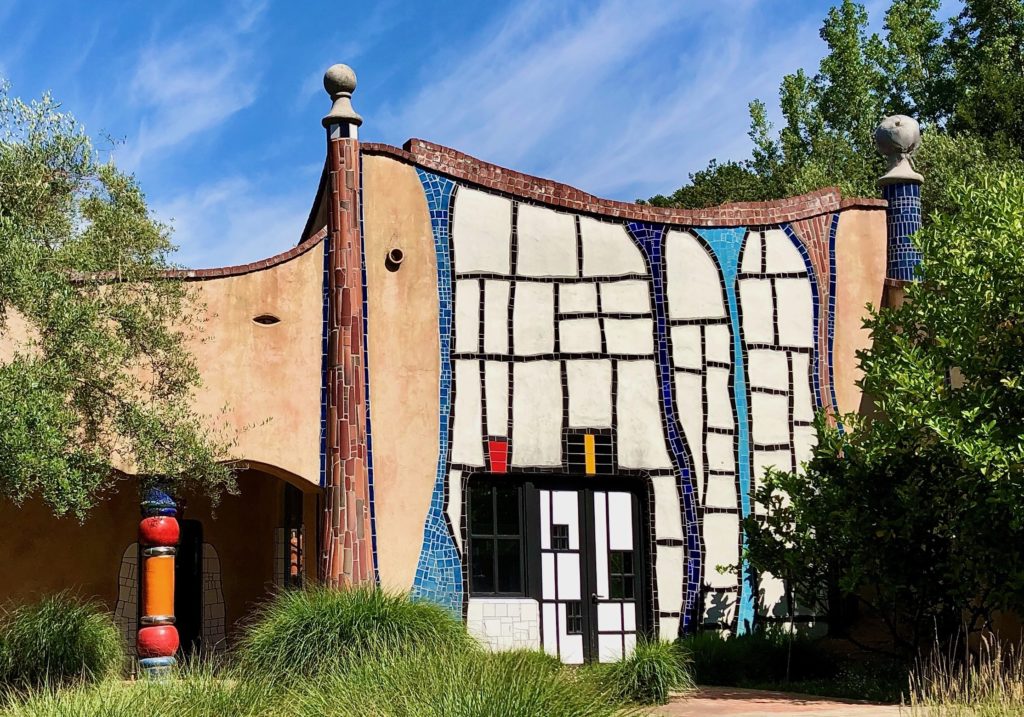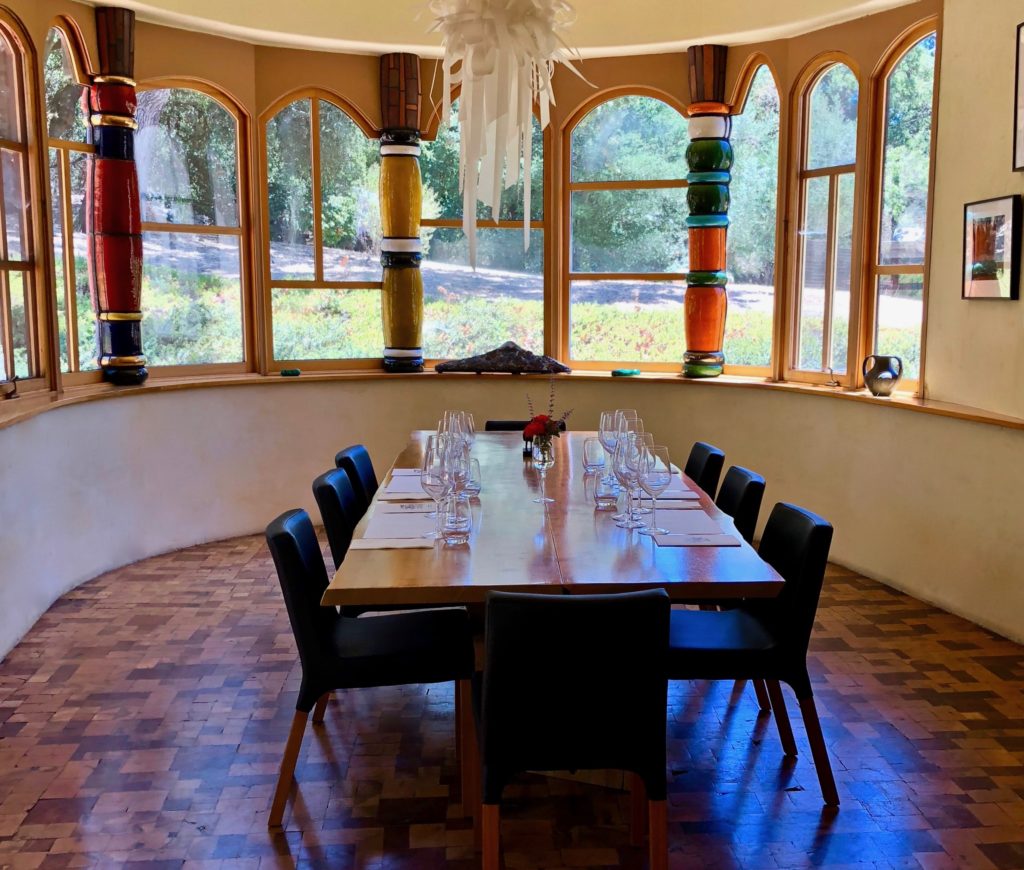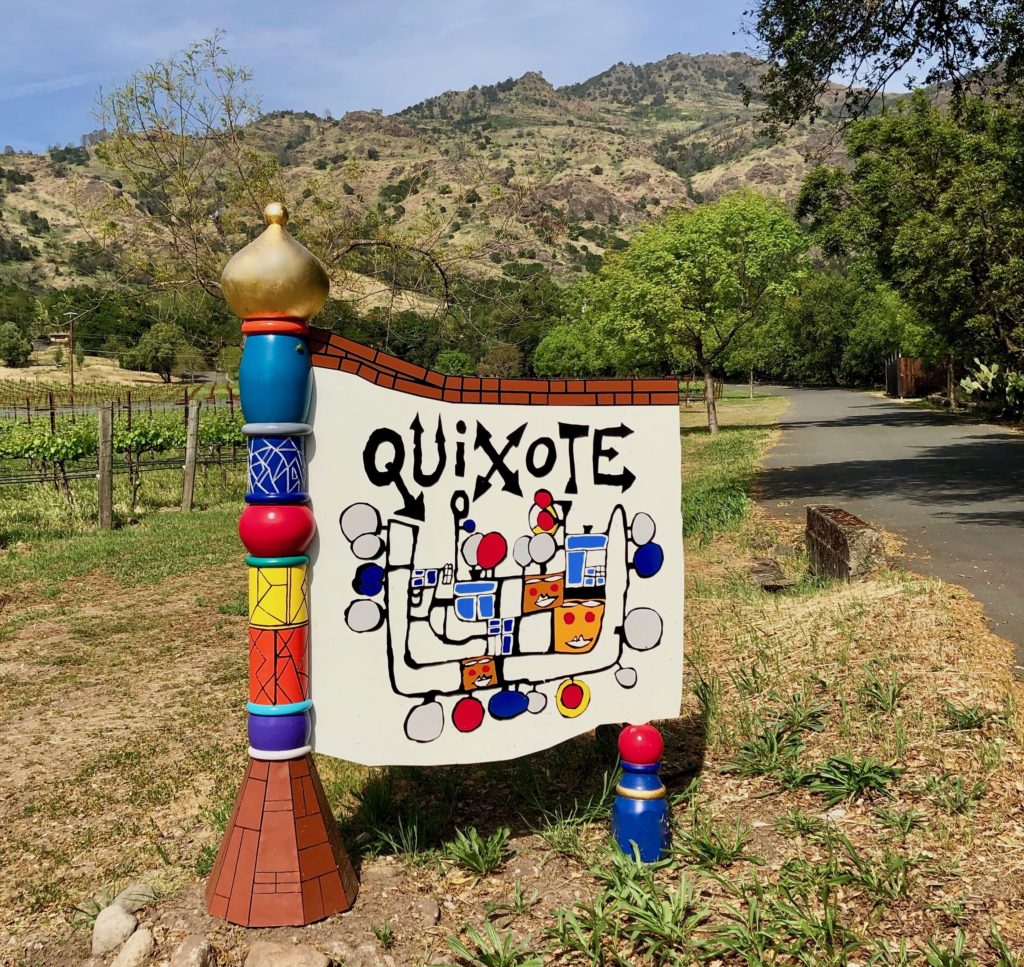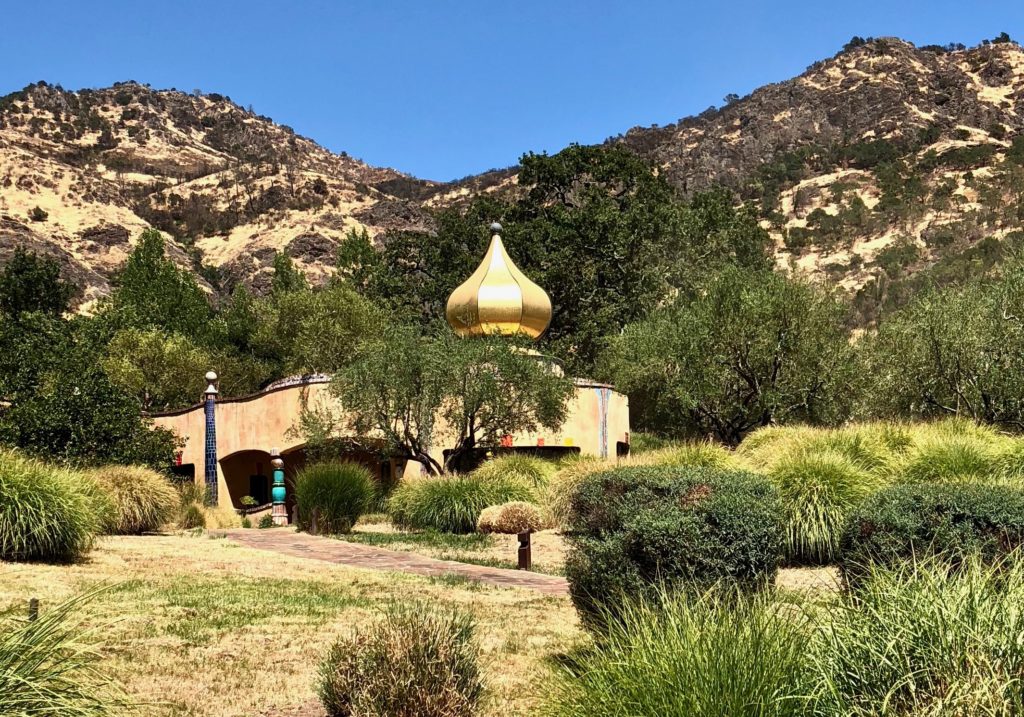Stags Leap District winery with seriously playful architecture specializes in refined Cabernet and Petite Sirah.
Ringed by olive trees and nestled near the rim of a bowl-shaped valley beneath the Stags Leap Palisades, Quixote Winery‘s production facility and tasting space rank among the Napa Valley’s most architecturally significant structures. The only US project of the late Vienna-born artist, architect, philosopher, and environmentalist Friedensreich Hundertwasser, the one-story winery strikes a seriously playful pose with its colorful ceramic tiles and shimmering gold onion dome. Like the sod roof from which it rises, the dome is among the iconoclastic architect’s trademarks, as are the curving walls and undulating roofline.

Quixote specializes in estate-grown Stags Leap District Cabernet Sauvignon and Petite Sirah, crafted since 2016 in the silky, elegant style of director of winemaking Robert Smith and consulting winemaker Philippe Melka. The latter, famously discerning about his roster of clients, was attracted by Quixote’s singular 50-acre site, bordered by Shafer Vineyards, whose vines to the north supply grapes for its coveted Hillside Select Cabernet, and historic Stags’ Leap Winery to the south. Melka arrived shortly after new owners purchased Quixote from Carl Doumani, its founder. Doumani, who revived Stags’ Leap Winery in the 1970s, retained a small parcel to start Quixote when he sold Stags’ Leap to Beringer in 1997. In addition to Cabernet and Petite Sirah, less than an acre of Malbec is planted, along with a few blocks of Cabernet Franc and Petit Verdot.

For much of Doumani’s tenure, Aaron Pott, himself a consultant of note, made Quixote’s wines. Both Pott and Melka are known for attention to viticultural detail, so these vines, most planted in 2002 and farmed organically, have been well tended their entire lives. Although only 27 acres, Quixote’s vineyard contains four distinct soil types that, says Smith, add complexity to the wines, which age nearly two years in French oak barrels and an additional year in bottle. Smooth and drinkable upon release, they can be held for two decades or more.

Hundertwasser, and Doumani, who commissioned the architect’s design, were larger-than-life characters, so hosts at tastings here have no shortage of anecdotes to draw upon. The leisurely tastings conclude either outdoors or in one of two light-filled spaces. The combination of aesthetic delights and natural beauty—an oval room in the back faces the palisades, and the circular one under the dome has views across the Napa Valley to Mount Veeder—perfectly complements the refined wines composed at this unique hideaway.

Info
6126 Silverado Trail, Napa 94558
This profile first appeared in The California Directory of Fine Wineries, ninth edition (2019), and is reproduced here, with 2023 updates, courtesy of the publisher, Wine House Press.

Pingback: STORY INDEX BY REGION – Daniel Mangin